
Philosophical Synchronicity
The Dialectic of Objectivity and Subjectivity in Jung and Polanyi
Download or listen to this article
Todd Speidell and Zachary Kampf, April 20, 2023

Michael Polanyi
As a philosopher-scientist, Jung would have enjoyed reading the work of Michael Polanyi, who was a vocal critic of the polar opposition of objectivism and subjectivism. Polanyi was a polymath whose research, scholarship, and teaching posts in the United Kingdom (Manchester and Oxford) included the fields of physical chemistry, social sciences, and philosophy of science. Polanyi (1958/1962) noted that “towards the end of the nineteenth century a new positivist philosophy arose” which restricted science to “observable magnitudes” (p. 9) and created a “disjunction of subjectivity and objectivity” (p. 15). Historian of philosophy Frederick Copleston (1994) similarly decried “the neo-positivism or logical positivism of the twentieth century” (p. 74, n. 9) for reducing the scientist to a mere “spectator” or “external judge” who “tries to explain new facts by reducing them to old facts” (p. 372).
Rather than falling into this kind of reductive objectivism, Polanyi argued for a consistently balanced unity of subjectivity and objectivity, in the same way that Jung’s psychology is based on a tension of the opposites. Polanyi (1958/1962) argued for “personal knowledge,” which acknowledges a “personal coefficient” that “shapes all factual knowledge” and thereby bridges “the disjunction between subjectivity and objectivity” (p. 17). Over and against both subjectivism and objectivism, Polanyi postulated that scientific knowledge embraces “personal obligations to universal standards” (p. 17). Polanyi specifically suggested the phrase “personal knowledge” to get beyond the dichotomy that objective knowledge is impersonal and that subjective persons do not aim to understand knowledge beyond themselves. He offered “personal knowledge” as a third and integrated way of upholding objectivity (against an objectivism devoid of subjectivity) and subjectivity (against a subjectivism detached from objectivity). Knowledge is personal, yet persons aim towards knowledge.
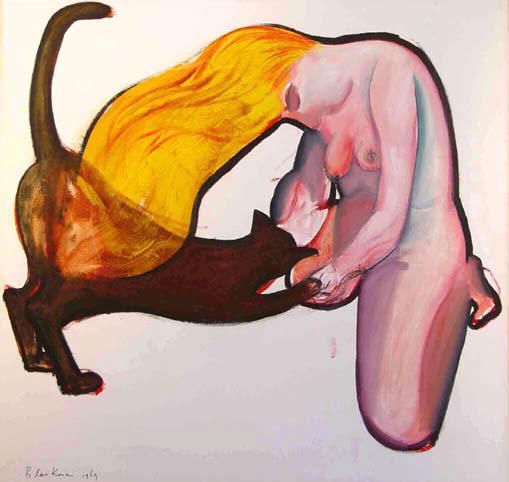
Polanyi also carefully spoke to the widespread confusion in commonly used terms (like the conflation of “objectivity” and “objectivism” or of “subjectivity” and “subjectivism”). His view of “personal knowledge” or “personal participation” was a way of describing the “fusion of the personal and the objective” (Polanyi, 1958/1962, p. viii); he specifically included the physical sciences where “the act of knowing includes an appraisal; and this personal coefficient, which shapes all factual knowledge, bridges in doing so the disjunction between subjectivity and objectivity” by upholding “personal obligations to universal standards” (p. 17). Against objectivism, he wrote that “modern scientism fetters thought as cruelly as ever the churches had done.” Instead, he said, we should reject the “soul-destroying tyrannies” of both “medieval dogmatism and modern positivism” (p. 265). Polanyi’s “post-critical” move suggests going beyond the modern divide of an arid objectivism and a self-grounded subjectivity. In his words:
We must now recognize belief once more as the source of all knowledge. Tacit assent and intellectual passions, the sharing of an idiom and of a cultural heritage, affiliation to a like-minded community: such are the impulses which shape our vision of the nature of things on which we rely for our mastery of things. No intelligence, however critical or original, can operate outside such a fiduciary framework. (Polanyi, 1958/1962, p. 266)
Polanyi’s conception of the personal holds together the objective and subjective aspects or dimensions of human knowledge. Insofar as persons submit their inquiries to an “independent” process beyond themselves and their “individual passions,” they may overcome the polar opposition of the subjective and objective, which is to say subjectivism vs. objectivism (p. 300).
Subjectivism in Popularized Jungianism
Viewing the remarkable coincidence of Jung’s and Polanyi’s ideas as a synchronistic event evokes the feeling of a milestone, as if there were a sudden breakthrough in the collective unconscious after a centuries-long epistemic struggle. Yet despite this complex, nuanced, and sophisticated accomplishment, the field of Jungian psychology, especially as it is understood in popular culture, has tended to fall into one-sided subjectivism. According to philosopher and Jungian analyst Marilyn Nagy (1991), subjectivism permeates the field because Jungians have followed “Jung’s subjectivist argument,” which “makes nonsense of scientific endeavor” (p. 31). In Nagy’s view, Jung’s metaphysics are ultimately subjectivist because in his most mature theoretical formulations “psychic energy stems finally from archetypes” rather than biological instinct, making the archetypal or spiritual domain of reality more fundamental than the instinctual or material (p. 144). Nagy asserted that this fundamental nature of archetypal spirit, in combination with Jung’s preference for a purposive or teleological understanding of the psyche, meant that “Jung’s basic view of the universe” was essentially the same as “Schopenhauer’s—a unitive reality in which phenomena are expressions of an underlying Will” (p. 168). “In Schopenhauer,” claimed Nagy, “Jung found another subjectivist interpreter of Kant, one who hypostasized a psychic quality … as ultimate Noumeon” (p. 74). Finally, because Jung appealed to the experience of archetypal factors as evidence for their metaphysical existence, Nagy charged both Jung and Jungians with epistemological subjectivism, stating that in such a “subjectivist framework, all experience is valid. … We cannot know what is real truth; we can know only what we individually experience” (p. 32). Nagy confessed that she “could not in any practical sense actually live [her] life as though there were no objective outer reality” (p. 30), and she therefore rejected this one-sided emphasis on individual, subjective experience, dualistically pitted over and against a purported unknowable objective reality.
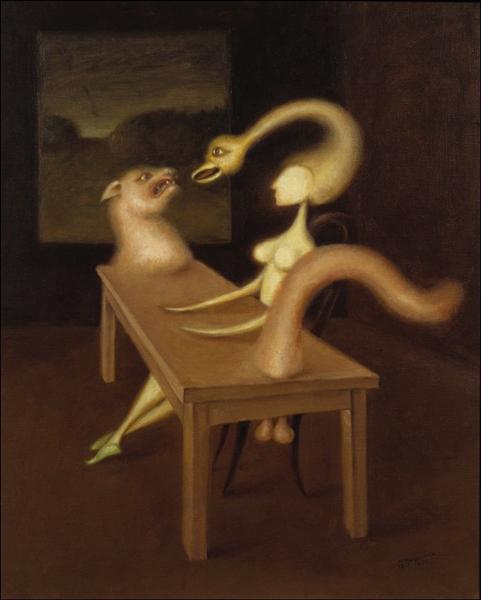
While Nagy (1991) was right that many Jungians have indeed fallen into unfettered subjectivism—Taylor (1992/2009) being an illustrative example—her argument that they have done so in accordance with Jung’s own “radically subjectivistic neo-Kantian” epistemology is overstated (p. 265). It is true that Jung (1921/1971a) decried the “stale and hollow” overvaluation of “objective cognition” that characterized the positivistic zeitgeist of his time, deeming it in no uncertain terms a “violation of life as stupid as it is presumptuous” (¶ 621). It is also true that he saw this objectivist bias as especially problematic for the field of psychology. Jung (1912/1967) recognized that “all knowledge of the psyche is itself psychic” (¶ 344). Therefore, every psychological theory “has the character of a subjective confession” on the part of the theorist (Jung, 1929/1961, ¶ 774). But although he accepted the preeminence of the subjective factor, in one of the forewords to Symbols of Transformation, he explicitly stated that he sought to move beyond it, “to free medical psychology from the subjective and personalistic bias … and to make it possible to understand the unconscious as an objective and collective psyche” (Jung, 1912/1967, Foreword to the Fourth [Swiss] Edition, ¶ 2).
In fact, Jungian psychology’s preeminent historian Sonu Shamdasani (2003) has shown that one of Jung’s primary motivations throughout his career was to formulate a general psychology that could function as a supraordinate science—an objective account of the subjective factor present in all other scientific disciplines. Several authors have taken up the problem of Jung’s metaphysics and come to strikingly different conclusions than Nagy’s charge of radical subjectivism. According to analytical philosopher and co-chair of the International Association of Jungian Studies Stephen Farah (2015), Jung developed his “meta-psychological model” (Method section, ¶ 2) of complexes and archetypes—universal psychic structures that delimit the possibilities of subjective experience—in part to overcome the problem of purportedly universal theories being unconsciously colored by the “subjective confession[s]” of their originators (Jung, 1967, ¶ 344), thus paving the way toward greater objectivity. Tom Cheetham (2015), a philosopher, biologist, and archetypal psychologist, has argued that by going deeply enough into his own subjectivity (i.e., the intrapersonal experiences portrayed in The Red Book), Jung encountered transpersonal psychic objects which were difficult to reduce to his own individual experience and which he later referred to as aspects of the “objective psyche” (Jung, 1917/1966, p. 66, n. 4). Jon Mills (2019), philosopher and professor of psychology and psychanalysis at Adler Graduate Professional School, also pointed to the archetypes of Jung’s metapsychology to illustrate the objective constraints on subjectivity, describing archetypes as “the ontological preconditions that make subjectivity possible” (p. 16). Mills commented in words that are strikingly similar to Polanyi’s: “I see no need to create a binary between the personal and the universal when both are operative within the minds of all people in any given time” (p. 22).
Yet despite these recognitions of objectivity in Jung’s metaphysics, Nagy (1991) and Mills (2019)—the two preeminent authors who have dealt most explicitly with underlying philosophical issues in Jung’s psychology—have both referred to his metaphysics as being ultimately idealist and Kantian in nature and therefore overvaluing the subjective pole. According to Mills (2019), Jung’s notion of the archetype “is very much an idealist position, namely, that the structures of subjectivity necessarily condition our experience of the world, and in this way construct reality” (p. 5). For Mills (2013), Jung can be located amongst “the ranks of the great German Idealists who view reality as the product of mind. But he could also be accused of espousing a crass idealism, where the psyche is believed to think the world into existence” (p. 21). Nagy’s (1991) charge that Jung’s metaphysics are equivalent to “radically subjectivistic neo-Kantianism” (p. 265) can be seen as just such an accusation of crass idealism. Even more relevant to the topic at hand, Nagy (1991) interpreted Jung’s dialectics as “being deliberately ambiguous” (p. 31), and his notion of the “identity of opposites” as a “mysterious and paradoxical formulation” that is “not a true answer” to important philosophical questions about the nature of reality (p. 133). It appears this failure to appreciate the nuance in Jung’s dialectical thought is what led Nagy to conclude that “the underlying foci of Jung’s theory of types” were “introversion” and “the resolution of conflict between inner and outer views through the subjectivized esse in anima” (p. 265). Whereas Nagy saw Jung’s typology as privileging introversion and elevating subjectivity, Jung scholar Marco Barreto (2019) emphasized much the opposite, proposing the primary focus of Jung’s typology to be overcoming the “inevitable subjective perspectivism (‘this is how I see things’)” faced by the field of psychology (p. 90). Barreto cited Jung’s own words, wherein he confessed that his typology was “designed, first and foremost, as an aid to a psychological critique of knowledge,” thus highlighting the epistemological import of sychological Types (p. 90).
The Basis of the Psyche
As Jung was working on Psychological Types, his goal of establishing a general or universal psychology was being thwarted by conflicting ideas, principally between the Freudian and Adlerian schools, regarding the etiology and treatment of neurosis. Jung proposed that a more thorough understanding of the dynamics of neurosis could be attained if one took into account the subjectivity of the different theorists, suggesting that Freud’s theory was limited by his extraverted bias and Adler’s by his introverted bias (Jung, 1915/1960, ¶ 411–419; Jung, 1929/1961, ¶ 638, 759; Jung, 1921/1971a, ¶ 88–93) . Somewhat paradoxically, Jung paved the way toward greater objectivity not by circumventing the subjective factor but by delving more deeply into it.

Jung (1921/1971a) further proposed that whether one’s attitude is introverted or extraverted depends upon the directional movement of libido. For Jung (1912/1967), libido was the psychological equivalent to the concept of energy in physics (¶ 189), and the amount of libido invested in a given thing could be inferred by the quality of attention or the intensity of interest elicited by that thing. When one’s attention is directed toward external objects, one’s libido is flowing outward, and one is in an extraverted orientation. When one’s attention is directed toward one’s own subjective experience, one’s libido is flowing inward, and one is in an introverted orientation. Although one’s mode of orientation and direction of libidinal flow can change depending on one’s inner and outer circumstances, people tend to have a definite and innate preference for one orientation or the other, thus the division of humankind into two distinct types (Jung, 1921/1971a,¶ 862).
The Revealing Nature of Extreme Cases
One might understandably accuse Jung of being overly simplistic by dividing the psyche into two basic categories. Myers and Myers (1995) made this very critique in their elaborations and clarifications of Jung’s type system. However, Jung was not dogmatic about this division as Carol Shumate (2021) has shown, quoting Jung’s distinction between healthy and unhealthy differentiation (or one-sidedness): “A conscious capacity for one-sidedness is a sign of the highest culture, but involuntary one-sidedness … is a sign of barbarism (1921/1971, ¶ 346)” (p. 78). Jung likely used these less common and more one-sided examples to illustrate the different types because it is easier to discern underlying constants from the extreme ends of the bell curve. What constitutes a unique gift or talent at the conscious or healthy side of the personality continuum appears at the other extreme more like a personality disorder. Jung (1921/1971a) observed that pathological, or what he termed “regressive” (¶ 860), forms of extraversion tend to present as hysteria, characterized by an “exaggerated rapport” with external persons or objects, the pronounced suggestibility of which “amounts to imitation” (¶ 566). Essentially, one’s natural subjective reality is usurped and replaced by the influence of the object. Contrarily, he observed that pathological or regressive forms of introversion tend to present as schizophrenic withdrawal, wherein outer objects lose all influence and are overrun by the projection of subjective fantasy material (¶ 860).
These underlying mechanisms, identified by Jung as the two most fundamental factors in both healthy and pathological structures of personality, are implicit in contemporary mainstream classifications of mental disorders. For example, the fifth revised edition (2022) of the American Psychological Association’s (APA) Diagnostic and Statistical Manual of Mental Disorders (DSM-V) asserts three different categories of personality disorder—Cluster A, Cluster B, and Cluster C. Cluster B comprises personality disorders evidencing dramatic and intensely emotional responses to things and a constant need for attention from others, such as borderline, histrionic, or narcissistic personality disorders. Clusters A and C comprise disorders wherein odd and eccentric (A) or anxious and fearful (C) behaviors predominate, such as schizoid, schizotypal, or avoidant personality disorders. Cluster B roughly corresponds with Jung’s (19211971a) description of the “exaggerated rapport” of the regressive extravert (¶ 860), whereas Clusters A and C roughly correspond with Jung’s description of the pathologically self-referential and fearfully inhibited regressive introvert.

Be it extraverted histrionic suggestibility or introverted schizotypal ideas of reference, both reflect a disordered or problematic subject-object differentiation and valuation. For Jung, the movement of libido in each case flows in opposite directions. In the former case, there is an excessive flow of libido toward the object, leaving the subjective world depleted of the necessary energy to remain in the threshold of consciousness. With one’s attention and interest captured entirely by the object, one loses sight of one’s own unique subjectivity and becomes merely an imitation of the object. In the latter case, there is an excessive flow of libido toward the subject, depriving the object of the necessary energy for its true otherness to remain conscious in the experience of the subject. One then experiences external events as having purely subjective significance (e.g., the random commercial on television is actually a secret message meant specifically for oneself). For Jung (1921/1971a), the epistemological challenges of such one-sided introversion or extraversion become apparent only when excessive libido, which manifests as intense “emotivity,” falsifies “the judgment of the patient about things or about himself” (¶ 860). In such cases:
We speak of [regressive] extraversion when he gives his whole interest to the outer world, to the object, and attributes an extraordinary importance and value to it. When, on the contrary, the objective world sinks into the shadow, as it were, or undergoes a devaluation, while the individual occupies the center of his own interest and becomes in his own eyes the only person worthy of consideration, it is a case of [regressive] introversion. (Jung, 1921/1971a, ¶ 860)
The essential association of introversion with subjectivity and extraversion with objectivity in Jung’s typological system can be inferred based on his emphasis on these pathologically extreme examples of both attitudes. Schizophrenic withdrawal reflects a deficit in the adaptation to objective conditions, as regressive introversion involves the “‘devaluation’ of the objective world” (Jung, 1921/1971a, ¶ 861), whereas hysteric imitation reflects a deficit in the adaptation to subjective conditions. Jung (1921/1971a) described the less extreme range of the bell curve of introversion and extraversion simply by stating that “the fate of one individual is determined more by the objects of his interest, while in another it is determined more by his own inner self, by the subject” (¶ 2).
The correlation of introversion-extraversion with subjectivity-objectivity is further evidenced by the interchangeable way in which Jung used the terms throughout Psychological Types. For example, in his explication of introverted feeling, Jung (1921/1971a) stated that everything “we have said of introverted thinking is equally true of introverted feeling” and then in the same paragraph used the alternative terminology to refer to the same phenomenon: “If subjective thinking can be understood only with difficulty … this is true in even higher degree of subjective feeling” (¶ 639). Rather than elevating one mode of orientation as superior to the other, Jung (1921/1971a) maintained a nuanced dialectical tension of subjectivity and objectivity, stating that “the two modes of adaptation work equally well and are successful in their own way” (¶ 559). This dialectical dance between subjectivity and objectivity is the foundation from which Jung (1917/1966) constructed his entire system of typology, offering against both the Adlerian and Freudian positions a “middle view” based on “common sense”: human behavior “is conditioned as much by the subject as by the object” (¶ 59–60).
Attitude is Fundamental
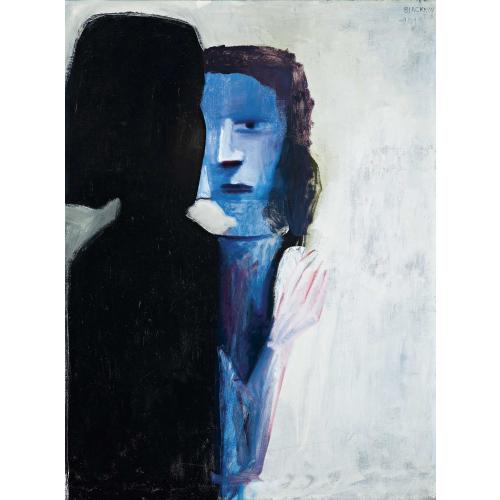
From this overall outline, it is evident that Jung derived his eight distinct psychological types from four functions in two basic attitudes. At the most essential level there is a compensatory tension of opposites between the attitude of consciousness and that of the unconscious. At a more differentiated level, a compensatory tension of opposites exists between the rational functions (thinking and feeling) and the irrational functions (intuition and sensation). For illustrative purposes, Jung described these various attitudes and functions as distinct concepts but insisted that in actual practice the two do not exist independently of each other: Attitudes are always expressed through functions, and functions always colored by attitude. Thus, while Jung (1921/1971a) described the attitudinal opposition of consciousness and the unconscious as though each were monolithic entities, he clarified that “there is no general attitude of the unconscious, but only typically modified forms of unconscious functions” (¶ 903). Further, “there are no introverts and extraverts pure and simple, but only introverted and extraverted function-types” (¶ 913).
Following his outline in Psychological Types, Jung unpacked the more essential level first, illustrating the self-regulating attitudes of consciousness and the unconscious before delving into the particular ways in which these attitudes are expressed through the different functions. Beginning with the extraverted type, Jung (1921/1971a) described this self-regulating dialectical system by stating that “we speak of an extraverted type” when “decisions and actions” are habitually “determined not by subjective views but by objective conditions” (¶ 563). Yet “a purely objective orientation,” he insisted, would do “violence to a multitude of subjective impulses, intentions, needs, and desires” (¶ 570). Without compensation from the unconscious, such a one-sided attitude would then be maladaptive, as it behooves the individual to be oriented to the whole of reality in both its objective and subjective components.
For Jung (1921/1971a), this self-regulatory dynamic in the extraverted type was perhaps most evident in the enantiodromia that occurs “when the period of morbid compensation arrives” in cases of hysteria (¶ 859). In such cases, the unchecked extraverted attitude eventually leads to a regression of libido, wherein “the patients cease to partake in the common life, are wrapped up in their daydreams, keep to their beds,” and are otherwise confined to the subjective world (¶ 859). This same essential psychological mechanism applies also to the introverted type, the extreme case being schizophrenic withdrawal compensated by an unconscious urge toward “extravagant, insupportable, or directly aggressive behavior” that forces the individual into confrontation with the outer objective world (¶ 859). Myers and Myers (1995) criticized Jung for using such extreme cases of “maximum contrast” to portray type differences and for being overly brief in his descriptions of “normal, balanced types with an auxiliary process at their disposal” (p. 17). However, they understood that Jung’s model suggests that individuals have a fairly balanced capacity for both extraverting and introverting their libido.

Whereas Myers and Myers (1995) systematically filled in the details on the conscious side of Jung’s typological outline, Beebe (2017) filled out the picture of the unconscious side. Beebe (2017) instituted a return to Jung’s E/I dialectic by insisting on the functions in their attitudes (p. 120), something that had been largely overlooked by users of Myers’ four-preference model. Moreover, he inferred from Jung’s model the functions that were largely missing from the MBTI® model, including the non-preferred or egodystonic functions that operate mostly unconsciously. Hence Beebe’s model restored the essential polarity of Jung’s type system, the influence of subjectivity and objectivity on the psyche.
Considering Jung’s insistence on the fundamental nature of attitude, alongside the interchangeable way in which he used the terms introversion-extraversion and subjectivity-objectivity, it is clear that he constructed his entire type system atop a dialectical foundation of subjectivity and objectivity. Further, the future innovations and developments of Myers and Myers (1995) and Beebe (2017) have, each in their own ways, expanded upon Jung’s initial multi-level dialectic. Jung was quite careful in maintaining the tension between these two essential opposites, often alternating between each position to validate both the necessity and incompleteness of each. Jung (1921/1971a) affirmed the necessity of subjectivity, stating that “the world exists not merely in itself, but also as it appears to me …. By overvaluing our capacity for objective cognition we repress the importance of the subjective factor, which simply means a denial of the subject” (¶ 621). While he refused to deny the subject, he was also careful not to lapse into unfettered subjectivism. In the context of his discussion on introversion as a conscious orientation to “subjective factors,” in contrast to the conscious extroverted orientation to “objective data” (¶ 620), he clarified his understanding of the subjective factor, differentiating it from mere subjectivism:
By the subjective factor I understand that psychological action or reaction which merges with the effect produced by the object and so gives rise to a new psychic datum. In so far as the subjective factor has, from the earliest times and among all peoples, remained in large measure constant, elementary perceptions and cognitions being almost universally the same, it is a reality that is just as firmly established as the external object. (Jung, 1921/1971a, ¶ 622)
Jung thus argued that the subjective factor has an objective reality in its own right. But for Jung, the constancy and universality of the subjective factor provide a reality as firmly established as external objective reality, even though they are only relative, just as the constancy and universality of objective data are relative and subject to variation. Jung (1921/1971a) emphasized:
Just as the object and objective data do not remain permanently the same, being perishable and subject to chance, so too the subjective factor is subject to variation and individual hazards. For this reason its value is also merely relative. That is to say, the excessive development of the introverted standpoint does not lead to a better and sounder use of the subjective factor, but rather to an artificial subjectivizing of consciousness which can hardly escape the reproach “merely subjective.” (Jung, 1921/1971a, ¶ 622)

Our lived reality is an interpenetration of subject and object, both in the conscious and unconscious aspects of our lives, which may be objectively known beyond our subjective experiences even though filtered by them. For Shumate (2021), “Jung gave us a way out of the solipsism of our projection machines, a portal through which to see the qualities we project onto others” (pp. 3–4). The very basis of Jung’s typology (extroversion vs. introversion) carefully distinguishes objective and subjective realities in a way that can free us from an entrapment within our own solipsistic, self-enclosed, or self-referential focus that puts out of reach even the possibility of knowing others or any reality beyond ourselves.
Polanyi’s view of the mutual indwelling of what is subjective (or “personal,” including for scientists in their research) and objective (or “knowledge,” which is the aim of any science) mirrors Jung’s dialectical tension of objectivity and subjectivity. The social sciences have not yet had their Einstein, who questioned the certainty of the objectivism of his time without lapsing into subjectivism. Jung, properly understood, would be a good candidate as he generally maintained the “tension of opposites,” including objectivity and subjectivity. Polanyi’s personal knowledge is more faithful to Jung to acknowledge the personal or subjective dimension of life while still aiming for objective knowledge in our understanding of ourselves and others, whether we be scientists or laypeople.
Jung, like Polanyi, carefully distinguished what is subjective from subjectivism and what is objective from objectivism. With his typology, Jung suggested that both subjectivity and objectivity are fundamental to human life and relationships, putting forth a careful, subtle, and dialectical balance of objectivity and subjectivity against both objectivism and subjectivism.
Subjectivism characterizes our contemporary postmodern culture and perhaps represents an understandable reaction to or compensation for the objectivism of the prior modern era. However, contemporary subjectivists continue to decry the bogeyman of objectivism without an apparent awareness that postmodern subjectivism has already replaced it. But Jung offered a more thoughtful and less reactive position: objectivity without objectivism and subjectivity without subjectivism, which he carefully incorporated as the basis of his typology. His basic philosophical conception for his typology offers an invitation to Jungians to recognize and move beyond the extreme polarization and unhelpful bifurcation of subjectivism vs. objectivism.
References
American Psychiatric Association. (2022). Diagnostic and statistical manual of mental disorders (5th ed., text rev.). https://doi.org/10.1176/appi.books.9780890425787
Barreto, M. H. (2019). Empiricism, skepticism, and belief in Jung’s epistemology. In J. Mills (Ed.), Jung and philosophy, pp. 86–108.
Beebe, J. (2017). Energies and patterns in psychological type: The reservoir of consciousness. Routledge.
Cheetham, T. (2015). The escape from subjectivity in Jung, Corbin, & Hillman. In Das rote buch: C.G. Jung’s Reise zum “Anderen Pol der Welt” (T. Arzt, Ed.). Studien zur Analytische Psychologie Band 5. Verlag Königshausen & Neumann.
Copleston, F. (1994). A history of philosophy: Vol. 9. Modern philosophy. Image Books.
Farah, S. (2015, September 9). The collective unconscious and its value for psychotherapy [Lecture]. University of Pretoria. South Africa. https://appliedjung.com/the-objective-psyche/
Jung, C. G. (1915/1960). Psychogenesis of mental disease (R. F. C. Hull, Trans.). In H. Read et al. (Eds.). The collected works of C.G. Jung, (Vol. 3). Princeton University Press.
Jung, C. G. (1929/1961). Freud and psychoanalysis (R. F. C. Hull, Trans.). In H. Read et al. (Eds.). The collected works of C.G. Jung, (Vol. 4). Princeton University Press.
Jung, C. G. (1917/1966). Two essays on analytical psychology (R. F. C. Hull, Trans.). In H. Read et al. (Eds.). The collected works of C.G. Jung, (Vol. 7). Princeton University Press.
Jung, C. G. (1912/1967). Symbols of transformation (R. F. C. Hull, Trans.). In H. Read et al. (Eds.). The collected works of C.G. Jung, (Vol. 5). Princeton University Press.
Jung, C. G. (1926/1969). The structure and dynamics of the psyche (R. F. C. Hull, Trans.). In H. Read et al. (Eds.). The collected works of C.G. Jung, (Vol. 8). Princeton University Press.
Jung, C. G. (1921/1971a). Psychological types (R. F. C. Hull, Trans.). In H. Read et al. (Eds.). The collected works of C.G. Jung, (Vol. 6). Princeton University Press.
Jung, C. G. (1923/1971b). Spirit in man, art, and literature (R. F. C. Hull, Trans.). In H. Read et al. (Eds.). The collected works of C.G. Jung, (Vol. 15). Princeton University Press.
Jung, C. G. (1934/1985). The practice of psychotherapy: Essays on the psychology of the transference and other subjects (R. F. C. Hull, Trans.). In H. Read et al. (Eds.). The collected works of C.G. Jung, (Vol. 16). Princeton University Press.
Mills, J. (2013). Jung’s metaphysics. International Journal of Jungian Studies, 5(1), 19-33.
Mills, J. (2019). Jung and philosophy. Routledge.
Myers, I. B., & Myers, P. B. (1995). Gifts differing: Understanding personality type. CPP Inc.
Nagy, M. (1991). Philosophical issues in C. G. Jung. SUNY Press.
Polanyi, M. (1958, 1962). Personal knowledge: Towards a post-critical philosophy. University of Chicago Press.
Shamdasani, S. (2003). Jung and the making of modern psychology: The dream of a science. Cambridge University Press.
Shumate, C. (2021). Projection and personality development via the eight-function model. Routledge.
Taylor, J. (2009). The wisdom of your dreams: Using dreams to tap into your unconscious and transform your life. Penguin. (Original work published 1992)
Images
Avery, M. (1958). Sea grasses and blue sea. Retrieved from wikiart.com
Blackman, C. (1969). Girl and cat. Retrieved from wikiart.com
Blackman, C. (n.d.). The gentle touch. Retrieved from wikiart.com
Blackman, C. (1965). The dancer. Retrieved from wikiart.com
Brauner, V. (1939). Fascination. Retrieved from wikiart.com
Finster, H. (1985). The super powers (4581). Retrieved from wikiart.com
Villon, J. (1951). The armchair. Retrieved from wikiart.com
Yerka, J. (2000). Erosion. Retrieved from wikiart.com




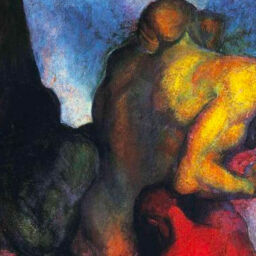


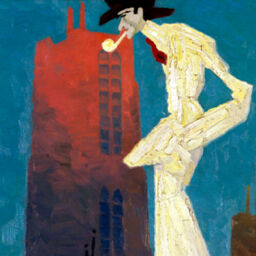


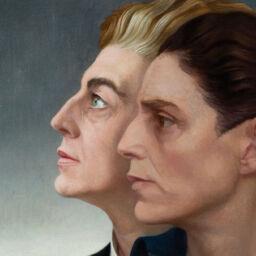
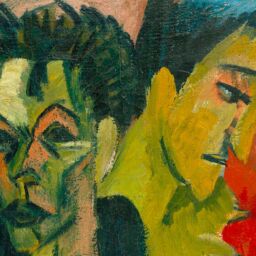





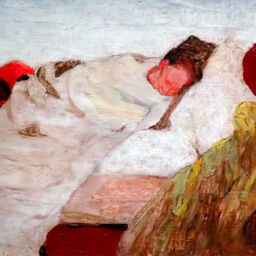

(ENTP) Nice discussion on how Jung’s writing skillfully holds a space to consider subjectivity and objectivity not as ends in themselves, but instead as part of a greater polarity. One of my favorite (and almost certainly unintentional!) illustrations of the limits of subjectivity is the following clip from a Yogi Bear cartoon:
https://media1.giphy.com/media/v1.Y2lkPTc5MGI3NjExOGU5NDkxZDE3MDgxYmIwN2E3YWU2YzZiMTcyZTNhZjFiZDM1MTQwNiZlcD12MV9pbnRlcm5hbF9naWZzX2dpZklkJmN0PWc/3o8doTrOWoQMV8h74k/giphy.gif
Yogi dreams of a picnic basket, and reaches into his dream to grab and eat some food. We immediately laugh because we instinctively grasp how impossible this is. Dream food can never nourish our physical bodies in the way that real food does. A real-life Yogi may well be able to transcend both subjectivity and objectivity in a nondual state of awareness, but I don’t know anyone who can literally snack on their dreams.